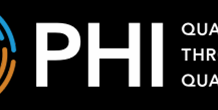Real world activation of the emergency preparedness plan
If a health care provider organization experienced an actual natural or manmade emergency that required activation of its emergency plan, it will be exempt from engaging in a community or individual organization-based full-scale exercise for 1 year following the onset of the actual event (per sections (d)(2)(i) of the provider and suppliers specific testing requirements.) Depending on the specific training and testing requirements for the provider type and the specific requirements associated with that type, the facility may still need to conduct a table-top exercise in the event the requirements call for one table top exercise and one full-scale exercise.
It is the responsibility of the health care provider organization to demonstrate compliance with the requirements. CMS has not specified the documentation required to demonstrate the compliance. However, organizations that activated their plan for a real-world emergency may have documentation such as meeting notes and minutes from an after-action review; annotated documentation of the date/time of the emergency; resident/patient transfers and evacuations which may have occurred during that time, etc.
Compliance
Health care provider organizations are expected to be in compliance with the requirements by 11/15/2017. In the event of non-compliance, the same general enforcement procedures will occur as is currently in place for any other conditions or requirements cited for non-compliance. The survey process will be the same as is current practice for the providers, including enforcement practices. CMS is also working on developing the training for surveyors, which we hope to make accessible to the public.
Full-Scale Exercise
Here are the definitions and differences between what CMS considers a facility based exercise and a full scale exercise.
- Facility-Based: When discussing the terms “all-hazards approach” and facility-based risk assessments, CMS considers the term “facility-based” to mean that the emergency preparedness program is specific to the facility. Facility-based includes, but is not limited to, hazards specific to a facility based on the geographic location, taking into account the resident/client/patient population. CMS acknowledges that participation in a community based full-scale exercise may not always be feasible or readily accessible. Therefore, if a community-based full-scale exercise is not feasible, the requirement does provide providers with the flexibility to conduct a testing exercise that is based on their individual facility.
- Full-Scale Exercise: A full scale exercise is a multi-agency, multi-jurisdictional, multi-discipline exercise involving functional (for example, joint field office, emergency operation centers, etc.) and ‘‘boots on the ground’’ response (for example, firefighters decontaminating mock victims). Full-Scale exercise is an operations-based exercise which typically involves multiple agencies and disciplines and incorporates the requirements for facilities to coordinate and collaborate with their state and local emergency officials. For purposes of the requirement for a community-based full-scale exercise, CMS expects facilities to simulate an anticipated response to an emergency involving their actual operations and the community. This would involve the creation of scenarios, the engagement and education of personnel, and mock patients/victims. In addition, this would include the involvement of other providers, suppliers, and community emergency response agencies. The intention of this requirement is to not only assess the feasibility of a provider’s emergency plan through testing, but also to encourage providers to become engaged in their community and promote a more coordinated response within the facility, across health care providers, and with State and local public health departments and emergency systems.
The Final Rule requires facilities to participate in a full-scale exercise that is community-based or when not available or accessible, the facility may conduct an individual facility-based exercise.
Planning
There are four core elements of the Emergency Preparedness Program and elements of the plan must be reviewed and updated annually.
- RISK ASSESSMENT AND PLANNING – all providers must develop an emergency plan using all hazards approach, plan and identify in advance essential functions and who is responsible in a crisis.
- POLICIES AND PROCEDURES – developed based on the plan (e.g. medical documentation, evacuation or shelter and place)
- COMMUNICATION PLAN – alternate means of communication, provide info to local authorities sharing medical info, and providing occupancy information and ability to provide assistance to other facilities in the community.
- TRAINING AND TESTING PROGRAM – train staff and test the plan through drills
Questions? Call Mike at (785) 291-3065 or send him an email.




